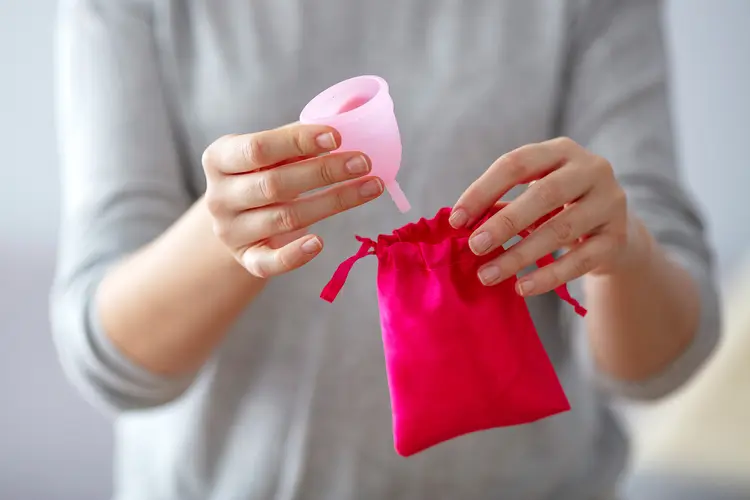A Guide to Menstrual Cups - Benefits, Challenges, and Use
- Jane Doe

- Aug 25
- 3 min read

Ever since the first menstrual pad was created, the sanitary belt in 1956 (Clue), the style and functionality of absorbent products have evolved. Despite this, the most popular form of period products are tampons and pads. (Harvard T.H. Chan) But could there be benefits to another, more efficient option available?
What are menstrual cups?
Menstrual cups are flexible cups (typically made of silicone) that are placed up the vaginal canal, similar to a tampon. But instead of absorbing blood like a cotton tampon, the non-porous material would collect the blood. Unlike other menstrual products, period cups existed even in the 1800s, with the first kind being patented in 1837. (WebMD)
Why were they not popular?
Leona Chalmers was the first person to patent a commercially available period cup, but due to her doing it in WW2 - that being in 1937 - rubber was scarce, and it would not be easy to mass produce. (WebMD)
What are the benefits?
There are quite a few benefits that come with switching to period cups. Other insertion devices like the tampon often come with a time limit of 4-8 hours to reduce the risk of TSS - also known as Toxic Shock Syndrome - but with period cups, you can leave them in longer. When using a period cup, you can keep it in for up to 12 hours. Keeping it in for this length can also be realistic, because a period cup holds twice the amount of liquid that a tampon does. (WebMD)
Period cups are not disposable like other cotton products, and they last from 2 to 10 years. (WebMD) Because of this, menstrual cups are cheaper than pads or tampons in the long run. It is also an eco-friendly option because it does not produce as much waste compared to the continued use of cotton-based products.
The disadvantages?
Although the period cup is efficient in different ways, there are also aspects where it lacks practicality. For example, menstrual cups need to be cleaned when taken out, and need to be sterilized each cycle. (WebMD) This is so as to avoid the chance of getting TSS, since taking the cup out exposes it to the outside environment with possible pathogens. The washing can be done with mild soap, but the sterilizing is done by boiling the cup in water. Taking out a menstrual cup can be difficult for new users too, as the process includes breaking the suction seal it creates around the vaginal canal.
How can I use a Menstrual Cup?
The first step would be to have a clean cup and clean hands. The period cup would be inserted similar to how a tampon would, but it needs to be folded first in order to fit through the entrance. It can be folded in different ways, but some ways would be folding it in half to resemble a "C" or bending down a corner to create a "7" shape. After, it would be pushed up. Insertion can be easier if done while squatting. (WebMD)
To take out a menstrual cup, pinch the base of the cup to release the seal, then pull it out.
_
Menstrual cups offer a sustainable and cost-effective choice to disposable, cotton-based products. The product can seem complicated for new users, but the benefits can make it a worthwhile option for many.
References
Harvard Chan School. (2024, July 17). Menstrual hygiene products: pads and tampons are the go-to choice | Study Updates | Harvard T.H. Chan School of Public Health. Harvard T.H. Chan School of Public Health; HSPH. https://hsph.harvard.edu/research/apple- womens-health-study/study-updates/menstrual-hygiene-products-pads-and- tampons- are-the-go-to-choice/
Kotler, J. (2018, November 20). A short history of modern menstrual products. Helloclue.com; Clue. https://helloclue.com/articles/culture/a-short-history-of-modern- menstrual-products
Marquez, J. R. (2023, October 31). What’s a Menstrual Cup? WebMD. https://www.webmd.com/women/menstrual-cup
Assessed and Endorsed by the MedReport Medical Review Board






